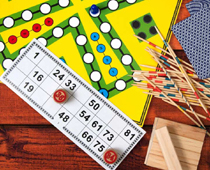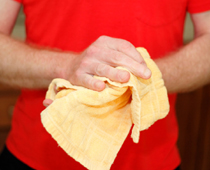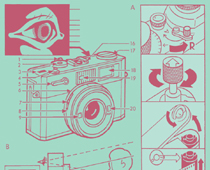
Ask the AI Tutor
Need help with Writing Instructions? Ask our AI Tutor!
AI Tutor - Lucy
Connecting with Tutor...
Please wait while we establish connection

Take the dog for a walk.
Writing Instructions
Writing instructions helps readers complete a task safely and correctly. This KS2 English quiz explains how to give clear step-by-step guidance.
To see a larger image, click on the picture.
1 .
2 .
3 .
4 .
5 .
Which of these connectives should be used in a set of instructions?
Yet, for, because, otherwise.
On the other hand, because, so, secondly.
Therefore, next, however, although.
First, next, then, finally.
Your instructions should be written using 'time connectives', such as 'first', 'next', 'then' and 'finally', to emphasise the correct order for following the steps.
6 .
Which of the following set of instructions is in the correct order?
Turn on the tap, soap your hands, rinse your hands, turn off the tap, dry your hands.
Rinse your hands, turn on the tap, turn off the tap, soap your hands, dry your hands.
Soap your hands, turn off the tap, dry your hands, turn on the tap, rinse your hands.
Dry your hands, turn on the tap, soap your hands, rinse your hands, turn off the tap.
Using connectives would improve these instructions: First, turn on the tap. Then soap your hands. Next, rinse your hands...
7 .
8 .
9 .
Which of the following is NOT an example of an instruction?
Could you wash your hands before you begin.
Don't run.
Fold the paper along the dotted line.
Whisk the cream until thick.
'Whisk', 'fold' and 'don't run' are examples of imperative (bossy) verbs. 'Wash your hands before you begin' would be an instruction.
**Unlimited Quizzes Await You! 🚀**
Hey there, quiz champ! 🌟 You've already tackled today's free questions.
Ready for more?
Ready for more?
🔓 Unlock UNLIMITED Quizzes and challenge yourself every day. But that's
not all...
not all...
🔥 As a Subscriber you can join our thrilling "Daily Streak" against other
quizzers. Try to win a coveted spot on our Hall of Fame Page.
quizzers. Try to win a coveted spot on our Hall of Fame Page.
Don't miss out! Join us now and keep the fun rolling. 🎉
**Unlimited Quizzes Await You! 🚀**
Hey there, quiz champ! 🌟 You've already tackled today's free questions. Ready for more?
🔓 Unlock UNLIMITED Quizzes and challenge yourself every day. But that's not all...
🔥 As a Subscriber you can join our thrilling "Daily Streak" against other quizzers. Try to win a coveted spot on our Hall of Fame Page.
Don't miss out! Join us now and keep the fun rolling. 🎉
















